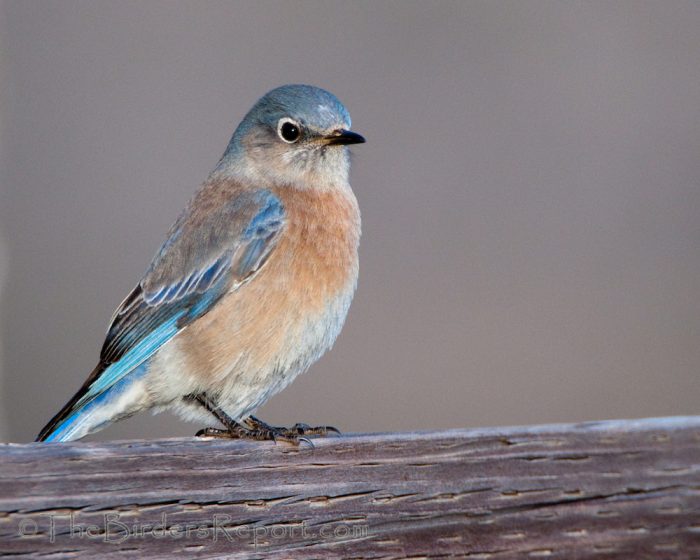
There’s a little piece of sky fluttering through the neighborhoods and neighbor-woods of the North State. Actually, many little pieces. But they are not at all Chicken Little’s nightmare; the sky isn’t falling. They are, rather, feathered beauties, and, if one is to believe the folklore, bringers of happiness.
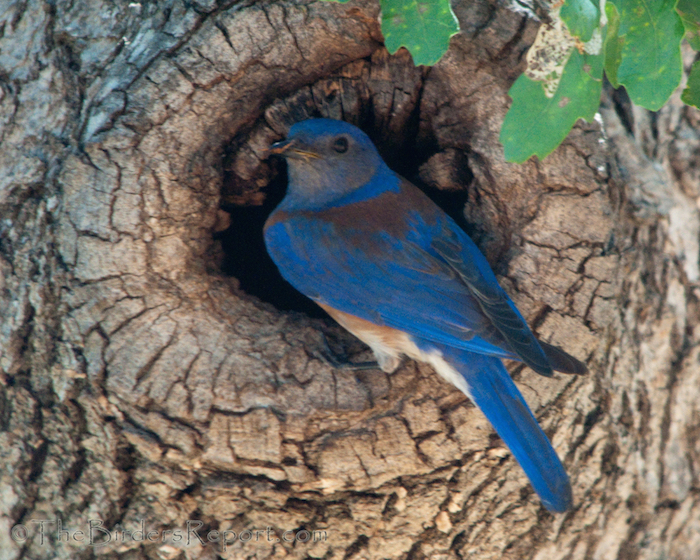
Western bluebirds thrive from Mexico up through the coastal states in just about any habitat that provides a mix of open woods and small meadows – say, for instance, the neighborhood woodlands of our area. Here the birds find everything they need to prosper.
Oak trees offer low branches, perfect perches from which to scan the weeds beneath, to drop down and snatch a tasty caterpillar or beetle that shows itself. That swoop-down style of hunting, for reasons that might be discernible, is known as hawking.
Oaks also seem to die for nearly as long as they live. Old oaks are notorious for holding dead limbs, and that rotting wood, with help from the squadrons of local woodpeckers, can contain entire housing developments–cavities–that bluebirds, along with others, will make their homes.
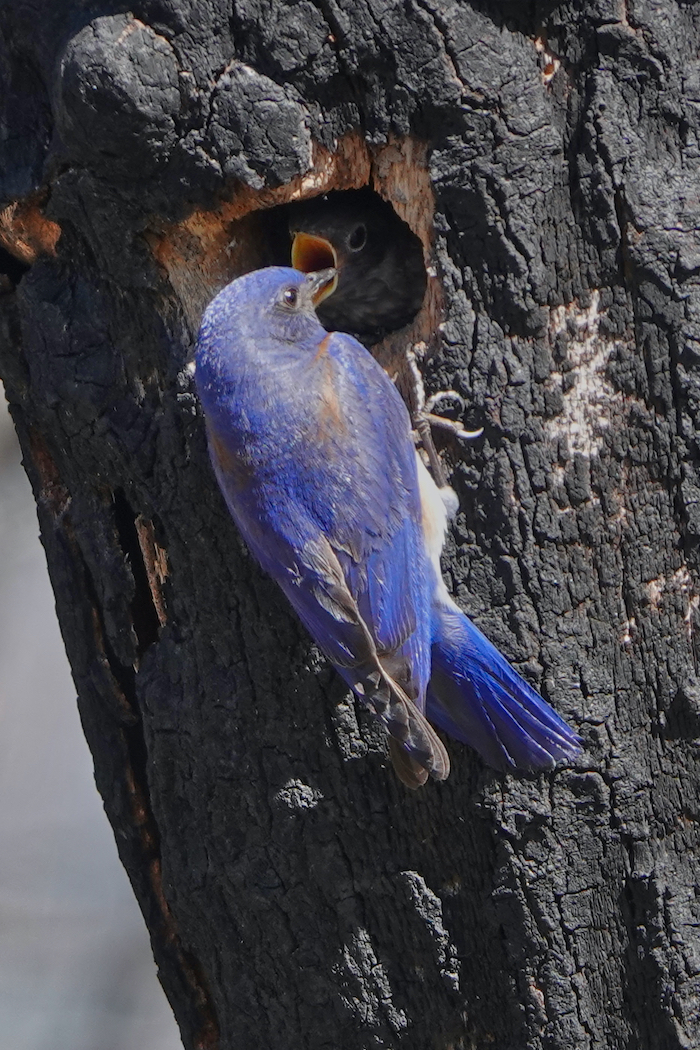
Within the oak woodland numerous berries are usually available to help balance a bluebird’s insect diet. Elderberries, toyon, grapes, and poison oak are high-calorie menu items, perfect for powering through the cold winter days and nights. Mistletoe berries–toxic to people but nutritious to birds–are a special favorite. Bluebirds will often defend a rich clump of mistletoe from phainopeplas or other birds that might want to claim that aisle in their grocery store; they will perch above the mistletoe and chase invaders off to their own fortunes. No reports on what the bluebirds do under the mistletoe.
There are other birds that are blue in our woodlands, but don’t mistake scrub-jays for the real bluebirds. Both may flock loosely with a half dozen kin, but the jays are long-tailed and raucous. The bluebirds are more demure. They are thrushes, relatives of robins, but with a quieter song, a chirp with a spring in it, seemingly just to keep the friends together.
With the sun behind you, males’ topsides almost sparkle with rich indigo-blue. Their breasts are decked in rusty red. The females are similar, but much paler throughout.
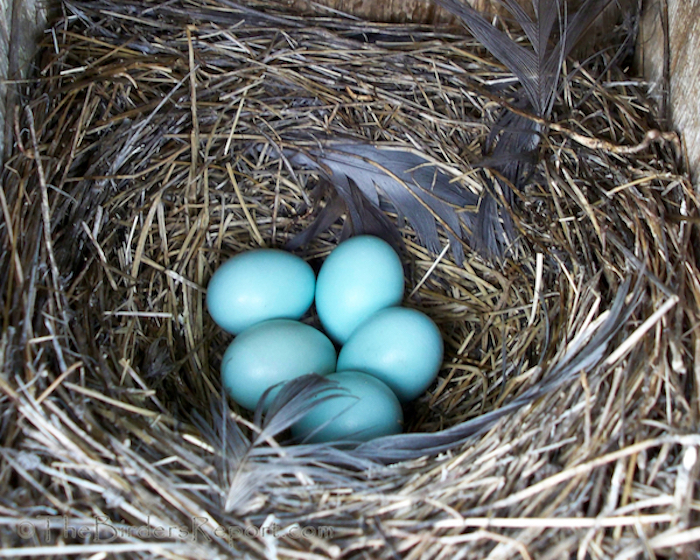
Together they house-hunt in spring, as many species do. Then she will build her nest, taking two weeks for the first nest of the season but, perhaps with a fatigue-induced shift in priorities, only one week for the second. In each she will lay a handful of eggs, most but not all of which are apt to be sired by the male attending her. She will incubate them for two weeks, and both parents will tend them through their fledging, another three weeks or more.
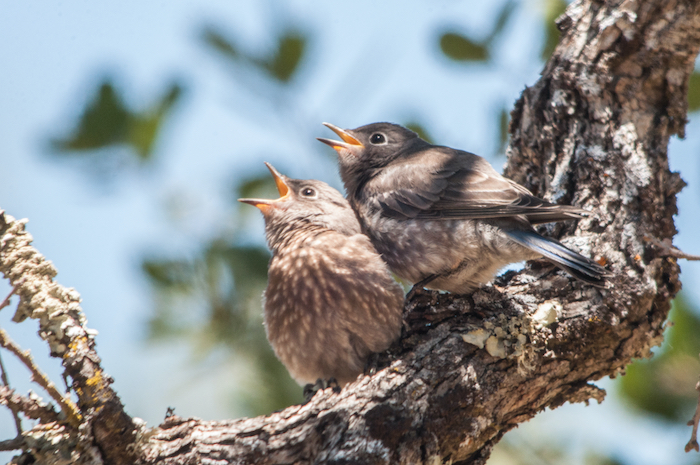
Even with extensive habitat changes, bluebirds seem to be holding their own. The cutting of dead limbs that could provide nesting sites has been offset by providing nesting boxes. Complementing numerous backyard bird-houses, our local Wintu Audubon has developed “Bluebird Trails,” strings of boxes used by bluebirds, tree swallows, nuthatches, and others. The Audubon chapter monitors those nestboxes and tracks the results for researchers. Last year the local Trails fledged 139 young birds.
Monitoring those nests is a fun weekly activity through the spring season. And yes, it is appropriate for doing with a child. If you would like to learn more about volunteering as a Nestbox Monitor, contact webmaster@wintuaudubon.org .
